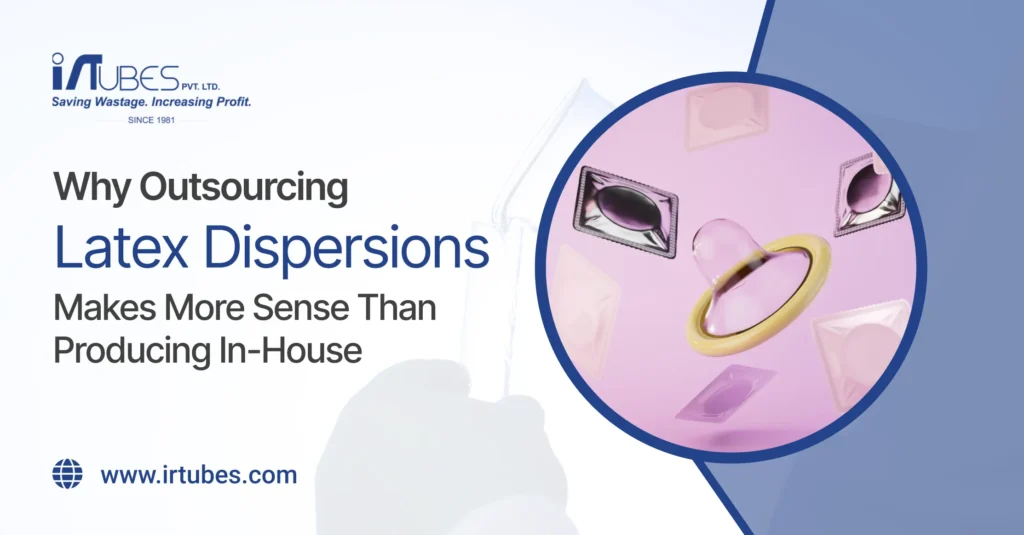There’s a common belief in the manufacturing world: if you produce it yourself, it will be cheaper. And while that may appear logical at first glance, it’s often misleading. This is particularly true when it comes to latex dispersions.
Over the years, I’ve spoken to countless manufacturers who insist on producing dispersions in-house, convinced that they’re saving money. But when we’ve sat down to map out the actual costs—beyond just raw materials—the picture has looked very different.
The True Cost of “Doing It Yourself”
In-house manufacturing tends to hide costs in plain sight. You account for raw materials, but rarely do you factor in the capital expenditure tied to setting up a facility. The recurring maintenance. The energy costs. The lab work. The skilled labor needed to operate and oversee the process. The inventory holding. The quality inconsistencies that inevitably lead to higher rejection rates. These aren’t minor footnotes—they are significant contributors to your bottom line.
We did a cost comparison recently for a product category that requires fine dispersion work: female condoms. The difference in cost between an outsourced dispersion and an in-house one was as little as two to three paisa per piece. And yet, that small delta was enough to spark serious debate.
What this marginal difference doesn’t reflect is the considerable investment needed to maintain a dispersion facility. Once we factored in capital cost, inventory risk, overheads, and the quality control burden, it became clear that in-house production wasn’t cheaper—it was more expensive and more complex to manage.
The Hidden Advantage of Specialization
There’s something powerful about letting specialists do what they’re best at. An outsourced dispersion provider like I.R.Tubes isn’t just offering a service—we’re offering years of optimization, research, and refinement that go into every batch. Our facilities are designed with dispersion quality in mind. Our teams are focused on nothing else. This level of focus translates directly into better quality and lower variability—something in-house setups rarely replicate.
The result? Less rejection. Fewer inconsistencies. Higher customer satisfaction. And for our clients, it means fewer headaches and more time to focus on what they’re truly in business to do—whether that’s manufacturing products, expanding markets, or driving innovation.
Rethinking Control and Quality
One argument I hear often is about control. “We want to control the quality ourselves.” I completely understand the sentiment. But control doesn’t always come from doing everything internally. In fact, it often comes from choosing the right partners—ones who are more advanced, more invested, and more experienced in a particular process than you can be, by design.
True control is about predictability. It’s about consistency. It’s about knowing that every batch that arrives will meet your standards without you having to micromanage. That’s what outsourcing—when done right—provides.
A Call for Thoughtful Evaluation
Outsourcing dispersions isn’t just a cost conversation. It’s a business philosophy decision. It asks a simple question: Where do you add the most value? If dispersion is not your core strength, is it worth diverting capital and energy away from the things that matter most to your business?
I invite you to explore this idea more deeply. Not with assumptions, but with real numbers. At I.R.Tubes, we’ve developed frameworks to help companies evaluate the full cost of in-house vs. outsourced dispersion. It’s a revealing exercise, and it often opens up new strategic possibilities.
You can explore these resources or speak to our team at www.irtubes.com. We’re here to help you see the full picture.
Conclusion
There’s a quiet shift happening in manufacturing—a shift from doing everything in-house to doing the right things in-house. Outsourcing dispersions isn’t just a tactic to save cost. It’s a conscious choice to be leaner, smarter, and more focused. And increasingly, it’s a choice that forward-thinking companies are making.
If you’re one of them, you already understand: excellence isn’t about doing more. It’s about doing what you do best—and letting others do the same.
Raju Jethmalani
IRTubes Pvt. Ltd., Pune

